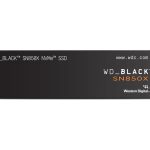The X670E AORUS Master motherboard features matte black and silver/grey colors. The pricing and quality of this product make it feel more premium than the previous generation Master offerings from AORUS. All of Gigabyte’s recent AORUS Master motherboards have been upgraded to an E-ATX form factor. It also has a more futuristic look to it.
2 of 9
The board uses the LGA 1718 socket to support AMD Ryzen 7000 processors. The socket is compatible only with Ryzen 7000 CPUs for now but will also support future iterations on the AM5 platform.
Next to the socket are four DDR5 DIMM slots that can support up to 128 GB of dual-channel memory. These slots are rated to support EXPO profiles up to 6400 MHz (OC Plus). The DIMM slots feature metallic shielding around them for extra durability. Each slot is labeled, making it easier to install DIMMs in the proper orientation. DDR5 memory comes with a different latch position so forcing a DDR4 module into a DDR5 slot will cause permanent damage.
The X670E AORUS Master features a 19+2+2 (VCore/ VccGT/VccAUX) phase digital power delivery that makes utilizes the RAA229131 PWM controller and RAA2201105 (105A) MOSFETs for the VCore. The Vcc GT and Vcc AUX MOSFETs are spec’d at 60A & 70A respectively.
As you can see, the VRMs are getting ample cooling from the Fin-Array III heatsinks that are both beefy in terms of size and also feature actual cooling fins. This motherboard is designed for overclocking so expect a smooth & stable operation of the electrical circuitry when this board is running. The motherboard also comes with a backplate that features thermal pads for extra cooling performance.
The CPU is supplied power through an 8+8 pin power connector configuration. This will feed the CPU with up to 300 Watts of power. The Intel 12th Gen Unlocked CPUs are very power-hungry with the maximum package power rating of 230W & more if you are planning to overclock these chips.
Getting a closer look at the VRM heatsinks reveals an aluminum fin design on both heatsinks. Each heatsink has thermal pads located underneath for efficient transfer of heat. The thermal pads on the X670E AORUS Master are rated at 12w/mK. While the heatsinks don’t feature any heat pipe-based interconnection, they do feature Direct-Touch Heatpipe II solutions underneath the fins that make direct contact with the VRMs.
Expansion slots include three PCI Express x16 (1 x Gen 5.0 x16 / 1 x Gen 4.0 x4 / 1x Gen 3.0 x 2) and four M.2 slots. The board can technically support three-way multi-GPU (CrossFireX / SLI) however we know that no existing gaming GPU offers 3-Way connectivity anymore. Two M.2 slots are rated to support NVMe PCIe Gen 5 x4 while the rest of the two slots operate at PCIe Gen 4 x4 speeds. The motherboard also offers 6 SATA III ports.
AORUS is using a metallic cover on the sides of the expansion slots which provides protection to some extent. It adds more retention and shearing resistance by reinforcing the slots with metal plates. Aside from adding more protection, they do look really sweet.
All five M.2 slots are cooled off by the thermal pad and aluminum baseplate cooling. This will ensure stable operation for M.2 storage devices. The thermal adhesive has a plastic cover over them which needs to be removed before being used with the storage devices.
The topmost M.2 slot that will house the primary M.2 is based on the new Thermal Guard III heatsink design that offers even more cooling performance through a larger heat sink. Following is the M.2 config on the motherboard:
CPU:
1 x PCI Express x16 slot, supporting PCIe 5.0* and running at x16 (PCIEX16)
* Actual support may vary by CPU.
* For optimum performance, if only one PCI Express graphics card is to be installed, be sure to install it in the PCIEX16 slot.
Chipset:
1 x PCI Express x16 slot, supporting PCIe 4.0 and running at x4 (PCIEX4)
1 x PCI Express x16 slot, supporting PCIe 3.0 and running at x2 (PCIEX2)
* The PCIEX2 slot shares bandwidth with the SATA3 4/5 connectors. The SATA3 4/5 connectors will become unavailable when a device is installed in the PCIEX2 slot.
The X670 dual PCHs are housed beneath a large heatsink with the AORUS eagle logo etched over it that looks great.
The PCH heat sink and the I/O cover feature RGB LEDs, as a part of the RGB Fusion 2.0 suite, embedded within it and there is also a wide range of RGB connectors on the motherboard if you want to set up your own lighting.
Storage options include six SATA III ports rated to operate at 6 GB/s. These can support 6 different storage devices at once. There are also two USB 3.2 front panel connectors (Gen 2×2 + Gen 1). USB 2.0 dual connectors are also included.
AORUS is using its AMP-UP Audio system for audio which is a combination of hardware, and software audio solutions. 7.1 CH HD audio with the latest Realtek ALC1220-VB CODECaudio codec.
There’s just one button on the motherboard which serves as a Power On/Off switch. The DEBUG LED can be seen next to the button.
The full list of connectors on the motherboard is listed as follows.
1 x 24-pin ATX main power connector
2 x 8-pin ATX 12V power connectors
1 x CPU fan header
1 x water cooling CPU fan header
4 x system fan headers
4 x system fan/water cooling pump headers
2 x addressable LED strip headers
2 x RGB LED strip headers
1 x CPU cooler LED strip/RGB LED strip header
4 x M.2 Socket 3 connectors
6 x SATA 6Gb/s connectors
1 x front panel header
1 x front panel audio header
1 x USB Type-C header, with USB 3.2 Gen 2×2 support
2 x USB 3.2 Gen 1 headers
2 x USB 2.0/1.1 headers
1 x noise detection header
1 x THB_U4 add-in card connector
1 x Trusted Platform Module header (For the GC-TPM2.0 SPI/GC-TPM2.0 SPI 2.0 module only)
1 x power button
1 x reset button
1 x reset jumper
1 x Clear CMOS jumper
2 x temperature sensor headers
Voltage Measurement Points
AORUS is using Intel’s WiFi 6E 802.11 AX210 WiFi Module to power wireless connectivity such as 802.11ax WiFi (2.4/5/6 GHz WiFi) and Bluetooth 5.2. In terms of Ethernet, there is also a single 2.5 Gigabit Ethernet LAN port which is powered by Intel’s network controller chip.
The motherboard comes with the following I/O connectors:
1 x Q-Flash Plus button
2 x SMA antenna connectors (2T2R)
1 x DisplayPort
1 x HDMI 2.0 port
1 x USB Type-C port (DisplayPort), with USB 3.2 Gen 2 support
1 x USB Type-C port, with USB 3.2 Gen 2×2 support
4 x USB 3.2 Gen 2 Type-A ports (red)
4 x USB 3.2 Gen 1 ports
2 x USB 2.0/1.1 ports
1 x RJ-45 port
1 x optical S/PDIF Out connector
2 x audio jacks





